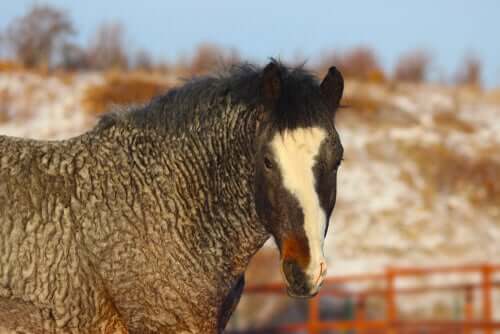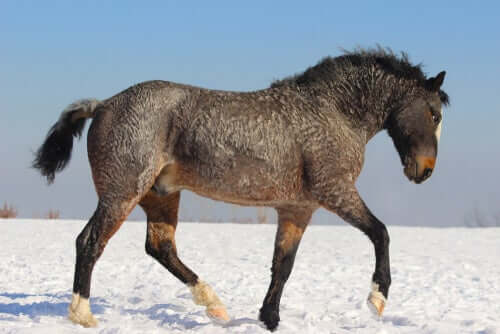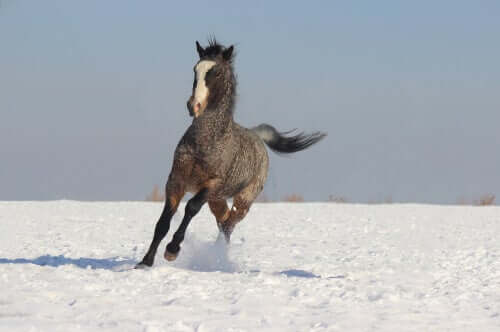The Curly Horse: Mysterious and Hypoallergenic

Horses are majestic animals. One of their most striking features is that gleaming coat of hair that shows up in all kinds of colors and patterns. This is part of what makes the curly horse such an interesting breed: its fleecy curls are unlike any other breed out there.
Keep reading to learn more about this gorgeous animal, including its history and its main characteristics.
The origins of the curly horse: a brief history
“Curly horse” is actually just one of their many names. Some people call it the Bashkir Curly, the American Bashkir Curly, or just “Curly.” There’s a lot of debate about their specific origins. Some people think they might have come from Iberia. Other people think they originated as wild animals in the Rocky Mountains, in the USA.
There are also some stories that suggest this breed of horse is much older than we think it is. The first references to what sounds like the curly horse breed show up in the early 2nd century, but we’re still not sure how accurate they are.
Plus, there are also documents that talk about how one of the horses owned by the emperor Taizong was unique for its curly hair. According to the story, its name was Quanmaogua (“curly,”), as a reference to this special trait.
Here’s an extra fun fact: if you visit this emperor’s tomb (now a popular monument), you’ll see carvings of some of his horses. They’re the horses that he rode into battle on in between 636-649 A.D.

Many years later, the curly horse gained fame through the work of Charles Darwin. This British scientist came up with an interesting theory about the link between their hair and the shape of their hooves. He also mentioned the potential existence of curly horses in Russia, and talked about how people were breeding them in Los Angeles.
Many Native American tribes, like the Sioux, saw curly horses as mystical creatures. Meanwhile, the European colonizers just saw them as ugly animals for their “frizzy” hair.
The appearance and temperament of the curly horse
Obviously, the most striking part of a curly horse is its thick, curly coat of hair. As far as color, their hair can either be one, two, or three colors, with all kinds of patterns. Experts also accept a horse as curly if it has those famous “zebra-striped hooves.”
Moving beyond their hair, curly horses are generally medium-sized, with proportional, muscular bodies and tough hooves. As stocky as they may be, they’re also very agile and can move around very precisely and elegantly.
Their tails are generally not too high up on their body, and their hips aren’t especially wide, which helps them keep a very upright posture. They have dark, almond-shaped eyes that are also very expressive.
Curly horses have as striking a temperament as they do an appearance. This breed has a balanced, active personality. With training, they are very reliable and very willing to learn.

Like all other horses, curly horses are extremely intelligent and sensitive. They’re capable of forming deep bonds with their caretakers and are highly sociable with other animals. Besides basic healthcare, they also need lots of physical and mental stimulation to keep them stable.
Why do they have curly hair?
This unique feature comes from a genetic mutation. It was most likely an adaptive response to the climate in the place where this breed originally comes from. Their “frizzy” hair gives them a dense extra coat that protects them from the cold.
Oddly enough, short-haired curly horses don’t necessarily have curly hair. In this case, its hair is still wavier and fleecier than other breeds, just without the curls. In general, their curls are especially noticeable around the ears, hock, mane, and tail.
It’s also common to see a major change in curly horses in the summer. They shed their thicker hair so that they’ll have a lighter coat for the heat. As winter approaches again, their hair grows and the curls come back in full force to help them withstand the cold.
Not only does it make them look interesting, but their hair also makes them the only hypoallergenic breed of horse. This is a major benefit for any breeders, riders, or other people with allergies. It also makes this breed great for equine (horse) therapy and equestrian sports.
